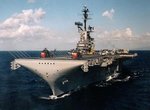6-22-1941 and 12-7-1941 are arguably the most important days of WWII. Those two days started the new world-order that was only established fully after the war and lasted almost the rest of the century. In case of the US it still lasts today.
Navigation
Install the app
How to install the app on iOS
Follow along with the video below to see how to install our site as a web app on your home screen.
Note: This feature may not be available in some browsers.
More options
You are using an out of date browser. It may not display this or other websites correctly.
You should upgrade or use an alternative browser.
You should upgrade or use an alternative browser.
December 7, 1941
- Thread starter beaupower32
- Start date
Ad: This forum contains affiliate links to products on Amazon and eBay. More information in Terms and rules
More options
Who Replied?diddyriddick
Staff Sergeant
Thanks for the reminder!


diddyriddick
Staff Sergeant
Our teacher showed our class never before seen photos of Pearl Harbor. He found them on a camera in his attic. There is a picture of a Zero strafing people. And a different angle of the Arizona exploding..

You should really try to get him to publish those, H.
B-17engineer
Colonel
I'll ask him tomorrow or shoot him an email.
lesofprimus
Brigadier General
I recieved an email from my brother 4 days ago.... Harrison, Im very curious to see what ur teacher has to say, as I have the pictures ur talking about already.... Ur teacher is either full of sh!t or its actually his camera and he already put them on the web....
Anyways here we go....
Pearl Harbor
On Sunday, December 7th, 1941 the Japanese launched a surprise attack against the U.S. Forces stationed at Pearl Harbor , Hawaii By planning this attack on a Sunday, the Japanese commander Admiral Nagumo, hoped to catch the entire fleet in port. As luck would have it, the Aircraft Carriers and one of the Battleships were not in port. (The USS Enterprise was returning from Wake Island , where it had just delivered some aircraft. The USS Lexington was ferrying aircraft to Midway, and the USS Saratoga and USS Colorado were undergoing repairs in the United States .)
In spite of the latest intelligence reports about the missing aircraft carriers (his most important targets), Admiral Nagumo decided to continue the attack with his force of six carriers and 423 aircraft. At a range of 230 miles north of Oahu , he launched the first wave of a two-wave attack. Beginning at 0600 hours his first wave consisted of 183 fighters and torpedo bombers which struck at the fleet in Pearl Harbor and the airfields in Hickam, Kaneohe and Ewa. The second strike, launched at 0715 hours, consisted of 167 aircraft, which again struck at the same targets.
At 0753 hours the first wave consisting of 40 Nakajima B5N2 'Kate' torpedo bombers, 51 Aichi D3A1 'Val' dive bombers, 50 high altitude bombers and 43 Zeros struck airfields and Pearl Harbor Within the next hour, the second wave arrived and continued the attack.
When it was over, the U..S. Losses were:
Casualties
US Army: 218 KIA, 364 WIA.
US Navy: 2,008 KIA, 710 WIA.
US MarineCorp: 109 KIA, 69 WIA.
Civilians: 68 KIA, 35 WIA.
TOTAL: 2,403 KIA, 1,178 WIA.
-------------------------------------------------
Battleships
USS Arizona (BB-39) - total loss when a bomb hit her magazine.
USS Oklahoma (BB-37) - Total loss when she capsized and sunk in the harbor.
USS California (BB-4 4) - Sunk at her berth. Later raised and repaired.
USS West Virginia (BB-48) - Sunk at her berth. Later raised and repaired.
USS Nevada - (BB-36) Beached to prevent sinking. Later repaired.
USS Pennsylvania (BB-38) - Light damage.
USS Maryland (BB-46) - Light damage.
USS Tennessee (BB-43) Light damage.
USS Utah (AG-16) - (former battleship used as a target) - Sunk.
--------------------------------------------------------------------------------------------------------------------------
Cruisers
USS New Orleans (CA-32) - Light Damage..
USS San Francisco (CA-38) - Light Damage.
USS Detroit (CL-8) - Light Damage.
USS Raleigh (CL-7) - Heavily damaged but repaired.
USS Helena (CL-50) - Light Damage.
USS Honolulu (CL-48) - Light Damage..
-------------------------- -- ---------------------------- ---------------------------------------------------------------
Destroyers
USS Downes (DD-375) - Destroyed. Parts salvaged.
USS Cassin - (DD -3 7 2) Destroyed. Parts salvaged.
USS Shaw (DD-373) - Very heavy damage.
USS Helm (DD-388) - Light Damage.
----------------------------------------------------------------------------------------------------------------------
Minelayer
USS Ogala (CM-4) - Sunk but later raised and repaired.
----------------------------------------------------------------------------------
Seaplane Tender
USS Curtiss (AV-4) - Severely damaged but later repaired.
------------------------------------------------------------------------------------
Repair Ship
USS Vestal (AR-4) - Severely damaged but later repaired.
------------------------------------------------------------------------------------
Harbor Tug
USS Sotoyomo (YT-9) - Sunk but later raised and repaired.
--------------------------------------------------------------------------------------------
Aircraft
188 Aircraft destroyed (92 USN and 92 U.S. Army Air Corps.)
Anyways here we go....
Pearl Harbor
On Sunday, December 7th, 1941 the Japanese launched a surprise attack against the U.S. Forces stationed at Pearl Harbor , Hawaii By planning this attack on a Sunday, the Japanese commander Admiral Nagumo, hoped to catch the entire fleet in port. As luck would have it, the Aircraft Carriers and one of the Battleships were not in port. (The USS Enterprise was returning from Wake Island , where it had just delivered some aircraft. The USS Lexington was ferrying aircraft to Midway, and the USS Saratoga and USS Colorado were undergoing repairs in the United States .)
In spite of the latest intelligence reports about the missing aircraft carriers (his most important targets), Admiral Nagumo decided to continue the attack with his force of six carriers and 423 aircraft. At a range of 230 miles north of Oahu , he launched the first wave of a two-wave attack. Beginning at 0600 hours his first wave consisted of 183 fighters and torpedo bombers which struck at the fleet in Pearl Harbor and the airfields in Hickam, Kaneohe and Ewa. The second strike, launched at 0715 hours, consisted of 167 aircraft, which again struck at the same targets.
At 0753 hours the first wave consisting of 40 Nakajima B5N2 'Kate' torpedo bombers, 51 Aichi D3A1 'Val' dive bombers, 50 high altitude bombers and 43 Zeros struck airfields and Pearl Harbor Within the next hour, the second wave arrived and continued the attack.
When it was over, the U..S. Losses were:
Casualties
US Army: 218 KIA, 364 WIA.
US Navy: 2,008 KIA, 710 WIA.
US MarineCorp: 109 KIA, 69 WIA.
Civilians: 68 KIA, 35 WIA.
TOTAL: 2,403 KIA, 1,178 WIA.
-------------------------------------------------
Battleships
USS Arizona (BB-39) - total loss when a bomb hit her magazine.
USS Oklahoma (BB-37) - Total loss when she capsized and sunk in the harbor.
USS California (BB-4 4) - Sunk at her berth. Later raised and repaired.
USS West Virginia (BB-48) - Sunk at her berth. Later raised and repaired.
USS Nevada - (BB-36) Beached to prevent sinking. Later repaired.
USS Pennsylvania (BB-38) - Light damage.
USS Maryland (BB-46) - Light damage.
USS Tennessee (BB-43) Light damage.
USS Utah (AG-16) - (former battleship used as a target) - Sunk.
--------------------------------------------------------------------------------------------------------------------------
Cruisers
USS New Orleans (CA-32) - Light Damage..
USS San Francisco (CA-38) - Light Damage.
USS Detroit (CL-8) - Light Damage.
USS Raleigh (CL-7) - Heavily damaged but repaired.
USS Helena (CL-50) - Light Damage.
USS Honolulu (CL-48) - Light Damage..
-------------------------- -- ---------------------------- ---------------------------------------------------------------
Destroyers
USS Downes (DD-375) - Destroyed. Parts salvaged.
USS Cassin - (DD -3 7 2) Destroyed. Parts salvaged.
USS Shaw (DD-373) - Very heavy damage.
USS Helm (DD-388) - Light Damage.
----------------------------------------------------------------------------------------------------------------------
Minelayer
USS Ogala (CM-4) - Sunk but later raised and repaired.
----------------------------------------------------------------------------------
Seaplane Tender
USS Curtiss (AV-4) - Severely damaged but later repaired.
------------------------------------------------------------------------------------
Repair Ship
USS Vestal (AR-4) - Severely damaged but later repaired.
------------------------------------------------------------------------------------
Harbor Tug
USS Sotoyomo (YT-9) - Sunk but later raised and repaired.
--------------------------------------------------------------------------------------------
Aircraft
188 Aircraft destroyed (92 USN and 92 U.S. Army Air Corps.)
Attachments
-
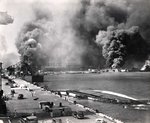 0010001.jpg42.5 KB · Views: 122
0010001.jpg42.5 KB · Views: 122 -
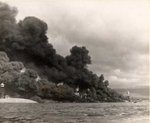 ATT00036.jpeg24.8 KB · Views: 150
ATT00036.jpeg24.8 KB · Views: 150 -
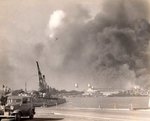 ATT00039.jpeg24.3 KB · Views: 145
ATT00039.jpeg24.3 KB · Views: 145 -
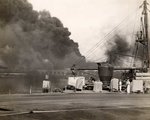 ATT00042.jpeg32.2 KB · Views: 142
ATT00042.jpeg32.2 KB · Views: 142 -
 ATT00045.jpeg30.2 KB · Views: 151
ATT00045.jpeg30.2 KB · Views: 151 -
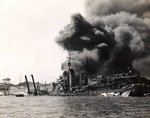 ATT00060.jpeg32 KB · Views: 139
ATT00060.jpeg32 KB · Views: 139 -
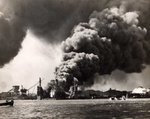 ATT00057.jpeg29.7 KB · Views: 141
ATT00057.jpeg29.7 KB · Views: 141 -
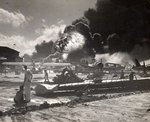 ATT00054.jpeg38.3 KB · Views: 137
ATT00054.jpeg38.3 KB · Views: 137 -
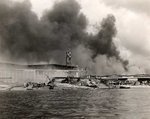 ATT00051.jpeg30.7 KB · Views: 144
ATT00051.jpeg30.7 KB · Views: 144 -
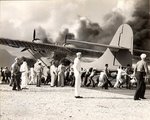 ATT00048.jpeg48.4 KB · Views: 140
ATT00048.jpeg48.4 KB · Views: 140 -
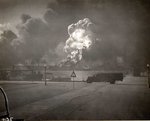 ATT00063.jpeg21.3 KB · Views: 144
ATT00063.jpeg21.3 KB · Views: 144 -
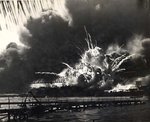 ATT00066.jpeg37.9 KB · Views: 125
ATT00066.jpeg37.9 KB · Views: 125 -
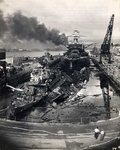 ATT00069.jpeg53.5 KB · Views: 144
ATT00069.jpeg53.5 KB · Views: 144 -
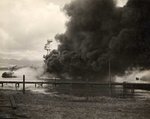 ATT00072.jpeg28.6 KB · Views: 143
ATT00072.jpeg28.6 KB · Views: 143 -
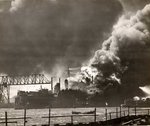 ATT00075.jpeg32.1 KB · Views: 137
ATT00075.jpeg32.1 KB · Views: 137 -
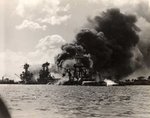 ATT00078.jpeg32.3 KB · Views: 135
ATT00078.jpeg32.3 KB · Views: 135
B-17engineer
Colonel
He found the camera brought it in and showed us. He sent the email to his family and closest friends... so maybe it just got passed on. I don't know if he'd lie about that..... he is very honest and had the camera to prove it...
N4521U
Plastic Pirate
I served on the newer Yortown CVS-10 in the early 60's, helo squadron on the 62-63 cruise. Some years later I was on Oahu, went to Pearl, visited the memorial, but just couldn't bring myself to go out to the ship. Cannot explain why I was so emotional about it, just couldn't step off the dock for that short boat ride. One should visit the Punchbowl there as well. It's the military cemetery in the crater of a volcano. Bill
Attachments
Aaron Brooks Wolters
Brigadier General



ToughOmbre
Senior Master Sergeant
He found the camera brought it in and showed us. He sent the email to his family and closest friends... so maybe it just got passed on. I don't know if he'd lie about that..... he is very honest and had the camera to prove it...
Harrison, Got a forwarded email from someone saying some guy found a camera with never before seen photos from Pearl. Attached were the so-called photos. This has been going around on the net for a while. Long story short. Agree with Dan, every one of the attached "never before seen photos" have been around. I have reference books containing some of them that are over 20 years old.
Think your teacher has an active imagination.
TO
lesofprimus
Brigadier General
Well Harrison, that sounds like the right scenario then....
The pics are awesome....
The pics are awesome....
vikingBerserker
Lieutenant General
The one with the USS Shaw blowing up has always amazed me. I could not even being to imagine.........
ToughOmbre
Senior Master Sergeant
The one with the USS Shaw blowing up has always amazed me. I could not even being to imagine.........
Amazing was that she was repaired and lived to fight again!
TO
RabidAlien
1st Lieutenant
Dang, some pics there I'd never seen before!
Harrison, those "never before seen" emails have been floating around for awhile. Last one I got said the guy was a sailor on a ship who's keel wasn't even laid yet, and from the fantail of this future-ship he was able to get pics of ships on both sides of Ford Island, the other side of Pearl Harbor (looking AT Ford Island), and managed to flag down a passing Zero and bummed a ride to get aerial photos, as well. After a very in-depth response, I haven't gotten a forward from this particular aunt-in-law since.
To those who gave their all at Pearl Harbor, and to those who survived:
Harrison, those "never before seen" emails have been floating around for awhile. Last one I got said the guy was a sailor on a ship who's keel wasn't even laid yet, and from the fantail of this future-ship he was able to get pics of ships on both sides of Ford Island, the other side of Pearl Harbor (looking AT Ford Island), and managed to flag down a passing Zero and bummed a ride to get aerial photos, as well. After a very in-depth response, I haven't gotten a forward from this particular aunt-in-law since.
To those who gave their all at Pearl Harbor, and to those who survived:



A Day that shall live in infamy.
seesul
Senior Master Sergeant
2 questions:
- how many victims were on Arizona?
- were some P-40s able to take off and fight with enemy during the attack?
- how many victims were on Arizona?
- were some P-40s able to take off and fight with enemy during the attack?
- Thread starter
- #37
beaupower32
Tech Sergeant
.pdf file of the USS Airzona Casuality list.
Welch was assigned to the 47th Fighter Squadron, 18th Fighter Group flying P-40 Kittyhawks at Wheeler Field, near Pearl Harbor, Hawaii in 1941. A fellow fighter pilot of the 18th Group, Francis S. Gabreski (who would later go on to become the top American Ace in the European Theater in World War II) described him.
"He was a rich kid, heir to the grape juice family, and we couldn't figure out why he was there since he probably could have avoided military service altogether if he wanted to." Many Japanese military aviators would regret that he hadn't.
In the beginning of December, 1941, Welch and 2nd Lt. Kenneth Taylor had moved their P-40s away from the main airfield at Wheeler to a nearby auxiliary field at Haleiwa as part of a gunnery exercise. The vast majority of Army Air Force fighters at Wheeler were parked in neat rows on the main flightline; although war with Japan appeared imminent, it was decided that the possibility of sabotage from the ground presented a greater threat than a potential air attack, and it was easier to guard them while parked in neat rows than dispersed on the airfield perimeter. Thus when the Japanese carrier-based sneak attack against Pearl Harbor and Wheeler and Hickam Fields came on the morning of December 7, 1941, the majority of the Army Air Force fighter force was easily destroyed on the ground, several of them when the first P-40 pilot attempting to take off to fight was hit and killed on his takeoff roll and his fighter went crashing down the flightline at Wheeler.
That Sunday morning Welch and Taylor were just leaving an all-night party at Wheeler Field, Hawaii. As they stood outside an army barracks watching the tropical dawn grow brighter, neither had any idea of the momentous event which was about to change their - lives. Welch was saying that instead of going to sleep, he wanted to drive back to their own base at nearby Haleiwa Field for a nice Sunday morning swim.
Suddenly the Japanese swooped down on Wheeler Field, which was a center for fighter operations in Hawaii. Dive bombers seemed to appear out of nowhere. Violent explosions upended the parked planes, and buildings began to burn. Welch ran for a telephone and called Haleiwa as bullets sprayed around him.
"Get two P-40s ready!" he yelled. "It's not a gag--the Japs are here."
The drive up to Haleiwa was a wild one. Japanese Zeros strafed Welch and Taylor three times. When the two fliers careened onto their field nine minutes later, their fighter planes were already armed and the propellers were turning over. Without waiting for orders they took off.
As they climbed for altitude they ran into twelve Japanese Val dive bombers over the Marine air base at Ewa. Welch and Taylor began their attack immediately. on their first pass, machine guns blazing, each shot down a bomber. As Taylor zoomed up and over in his Tomahawk, he saw an enemy bomber heading out to sea. He gave his P-40 full throttle and roared after it. Again his aim was good and the Val broke up before his eyes. In the meantime Welch's plane had been hit and he dived into a protective cloud bank. The damage didn't seem too serious so he flew out again--only to find himself on the tail of another Val. With only one gun now working he nevertheless managed to send the bomber flaming into the sea.
Both pilots now vectored toward burning Wheeler Field for more ammunition and gas. Unfortunately the extra cartridge belts for the P-40s were in a hangar which was on fire. Two mechanics ran bravely into the dangerous inferno and returned with the ammunition.
The Japanese were just beginning a second strafing of the field as Welch and Taylor hauled their P-40s into the air again. They headed directly into the enemy planes, all guns firing. This time Ken Taylor was hit in the arm, and then a Val closed in behind him. Welch kicked his rudder and the Tomahawk whipped around and blasted the Val, though his own plane had been hit once more. Taylor had to land, but George Welch shot down still another bomber near Ewa before he returned.
Perhaps twenty American fighter planes managed to get into the air that morning--including five obsolete Republic P-35s. Most of them were shot down, but their bravery and initiative accounted for six victories in the one-sided aerial battle
Welch was nominated for the Medal of Honor for his actions on Pearl Harbor Day, and the Air Force Chief, General Henry H. Arnold was reportedly anxious to receive the nomination. Unfortunately for Welch, the intermediate chain of command, their pride evidently smarting from having been caught off guard and suffering the devastation they did, reasoned absurdly that Welch had taken off without proper authorization and could therefore not be awarded the Nation's highest military award; the award was downgraded to a Distinguished Service Cross.
Welch remained in the Pacific Theater of Operations and went on to score 12 more kills against Japanese aircraft (16 in total). After the war, he became the chief test pilot for North American Aviation, makers of a long line of successful fighters that began with the P-51 Mustang, generally recognized as the best fighter of any air force in World War II. Welch began testing the prototype P-86 (later redesignated F-86) Sabre, a new jet fighter which combined the aerodynamic advances of the propeller-driven Mustang with the lessons of swept-wing research the Germans had developed for their jet aircraft toward the end of the war.
Welch was assigned to the 47th Fighter Squadron, 18th Fighter Group flying P-40 Kittyhawks at Wheeler Field, near Pearl Harbor, Hawaii in 1941. A fellow fighter pilot of the 18th Group, Francis S. Gabreski (who would later go on to become the top American Ace in the European Theater in World War II) described him.
"He was a rich kid, heir to the grape juice family, and we couldn't figure out why he was there since he probably could have avoided military service altogether if he wanted to." Many Japanese military aviators would regret that he hadn't.
In the beginning of December, 1941, Welch and 2nd Lt. Kenneth Taylor had moved their P-40s away from the main airfield at Wheeler to a nearby auxiliary field at Haleiwa as part of a gunnery exercise. The vast majority of Army Air Force fighters at Wheeler were parked in neat rows on the main flightline; although war with Japan appeared imminent, it was decided that the possibility of sabotage from the ground presented a greater threat than a potential air attack, and it was easier to guard them while parked in neat rows than dispersed on the airfield perimeter. Thus when the Japanese carrier-based sneak attack against Pearl Harbor and Wheeler and Hickam Fields came on the morning of December 7, 1941, the majority of the Army Air Force fighter force was easily destroyed on the ground, several of them when the first P-40 pilot attempting to take off to fight was hit and killed on his takeoff roll and his fighter went crashing down the flightline at Wheeler.
That Sunday morning Welch and Taylor were just leaving an all-night party at Wheeler Field, Hawaii. As they stood outside an army barracks watching the tropical dawn grow brighter, neither had any idea of the momentous event which was about to change their - lives. Welch was saying that instead of going to sleep, he wanted to drive back to their own base at nearby Haleiwa Field for a nice Sunday morning swim.
Suddenly the Japanese swooped down on Wheeler Field, which was a center for fighter operations in Hawaii. Dive bombers seemed to appear out of nowhere. Violent explosions upended the parked planes, and buildings began to burn. Welch ran for a telephone and called Haleiwa as bullets sprayed around him.
"Get two P-40s ready!" he yelled. "It's not a gag--the Japs are here."
The drive up to Haleiwa was a wild one. Japanese Zeros strafed Welch and Taylor three times. When the two fliers careened onto their field nine minutes later, their fighter planes were already armed and the propellers were turning over. Without waiting for orders they took off.
As they climbed for altitude they ran into twelve Japanese Val dive bombers over the Marine air base at Ewa. Welch and Taylor began their attack immediately. on their first pass, machine guns blazing, each shot down a bomber. As Taylor zoomed up and over in his Tomahawk, he saw an enemy bomber heading out to sea. He gave his P-40 full throttle and roared after it. Again his aim was good and the Val broke up before his eyes. In the meantime Welch's plane had been hit and he dived into a protective cloud bank. The damage didn't seem too serious so he flew out again--only to find himself on the tail of another Val. With only one gun now working he nevertheless managed to send the bomber flaming into the sea.
Both pilots now vectored toward burning Wheeler Field for more ammunition and gas. Unfortunately the extra cartridge belts for the P-40s were in a hangar which was on fire. Two mechanics ran bravely into the dangerous inferno and returned with the ammunition.
The Japanese were just beginning a second strafing of the field as Welch and Taylor hauled their P-40s into the air again. They headed directly into the enemy planes, all guns firing. This time Ken Taylor was hit in the arm, and then a Val closed in behind him. Welch kicked his rudder and the Tomahawk whipped around and blasted the Val, though his own plane had been hit once more. Taylor had to land, but George Welch shot down still another bomber near Ewa before he returned.
Perhaps twenty American fighter planes managed to get into the air that morning--including five obsolete Republic P-35s. Most of them were shot down, but their bravery and initiative accounted for six victories in the one-sided aerial battle
Welch was nominated for the Medal of Honor for his actions on Pearl Harbor Day, and the Air Force Chief, General Henry H. Arnold was reportedly anxious to receive the nomination. Unfortunately for Welch, the intermediate chain of command, their pride evidently smarting from having been caught off guard and suffering the devastation they did, reasoned absurdly that Welch had taken off without proper authorization and could therefore not be awarded the Nation's highest military award; the award was downgraded to a Distinguished Service Cross.
Welch remained in the Pacific Theater of Operations and went on to score 12 more kills against Japanese aircraft (16 in total). After the war, he became the chief test pilot for North American Aviation, makers of a long line of successful fighters that began with the P-51 Mustang, generally recognized as the best fighter of any air force in World War II. Welch began testing the prototype P-86 (later redesignated F-86) Sabre, a new jet fighter which combined the aerodynamic advances of the propeller-driven Mustang with the lessons of swept-wing research the Germans had developed for their jet aircraft toward the end of the war.
buffnut453
Captain
And today is the anniversary of the commencement of the Japanese assault on Malaya and Singapore which, slightly perversely, was before the attack on Pearl Harbor.
KR
Mark
KR
Mark
ccheese
Member In Perpetuity
The majority of the members of this forum were not even born when this attack took place. I was seven years old and
can remember all the hoop-la about it. My sister, Shirley, and I were sitting on our front steps when a neighbor came
to tell my mother. I remember the newspaper boys yelling "X-tra... read all about it"... on the corners. You gotta
remember, this was before TV had been invented, so we didn't get the news like you would today, with "on the spot
reporting".
Of course, I was too young to understand the significance of what had happened, but I will never forget it.
I salute those who were there ....
Charles
can remember all the hoop-la about it. My sister, Shirley, and I were sitting on our front steps when a neighbor came
to tell my mother. I remember the newspaper boys yelling "X-tra... read all about it"... on the corners. You gotta
remember, this was before TV had been invented, so we didn't get the news like you would today, with "on the spot
reporting".
Of course, I was too young to understand the significance of what had happened, but I will never forget it.
I salute those who were there ....

Charles
Messy1
Master Sergeant
I received the email with the "newly" discovered pictures too Harrison. Not sure what your teaching was talking about, I wouldn't confront him about it, you have had more than enough trouble with teachers the past few weeks! 
Users who are viewing this thread
Total: 1 (members: 0, guests: 1)

